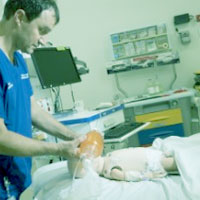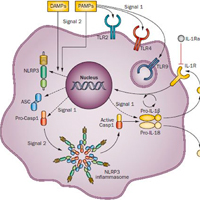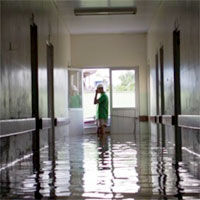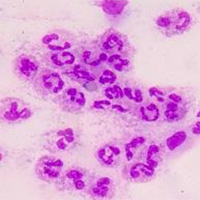Tag: infection

Phage Treatment of an Aortic Graft Infected with Pseudomonas Aeruginosa
Another phage therapy success. Bacteria-killing Viruses found in a pond knocked out an antibiotic resistant infection. Management of prosthetic vascular graft infections caused by Pseudomonas aeruginosa can be a significant... read more

Research Aims to Fine-Tune Sepsis Diagnosis
Work designed to improve diagnosis of one of the leading causes of death in children is under way in Brisbane, led by a University of Queensland researcher. Mater Research Institute-UQ Associate Professor Luregn Schlapbach... read more

Incidence of NV-HAP in the United States
Because nonventilator hospital-acquired pneumonia (NV-HAP) is understudied, our purpose was to determine the incidence, overall burden, and level of documented pneumonia preventive interventions of NV-HAP in 24 U.S. hospitals.... read more

Sepsis Patients can be Risk Stratified at the Time of Diagnosis
Multicenter Meta-Analysis Reveals Sepsis Patients can be Risk Stratified at the Time of Diagnosis Demonstrating Potential to Improve Critical Care Medicine on a Global Scale. For this study, the team identified a large collection... read more

How The Burn Trauma ICU Eliminated Central Line Infections
Is zero possible? In the case of central line infections, the answer was once no. A CLABSI (central line associated blood stream infection) was once considered a car crash, or an expected inevitability of care. When University... read more

Danger Signals in the ICU
Damage-associated molecular pattern activation and release is an important research for intensive care practitioners. It will add to our understanding of the phase and state of the innate immune response to an insult. Early... read more

On Diagnosing Sepsis
Two years ago, a panel appointed by the Society of Critical Care Medicine and the European Society of Intensive Care Medicine, referred to as a consensus conference, proposed a new definition for sepsis and new diagnostic... read more

Sepsis Incidence: A Population-Based Study
The incidence of sepsis with organ dysfunction is higher than most previous estimates independent of definition. The inclusion of all inpatients started on intravenous antibiotic treatment of sepsis in a population makes... read more

Oral Versus Intravenous Antibiotics for the Treatment Of Bone and Joint Infection
Oral antibiotic therapy is non-inferior to IV therapy when used during the first six weeks in the treatment for bone and joint infection, as assessed by definitive treatment failure within one year of randomisation. These... read more

Predictors, Prevalence, and Outcomes of Early Crystalloid Responsiveness Among Initially Hypotensive Patients With Sepsis and Septic Shock
Two in three hypotensive sepsis patients were responsive to initial fluid resuscitation. Heart failure, hypothermia, immunocompromise, hyperlactemia, and coagulopathy were associated with the refractory phenotype. Fluid resuscitation... read more

The Overlooked Danger of Delirium in Hospitals
The condition, once known as "ICU psychosis," disproportionately affects seniors and those who have been heavily sedated—and the delusions can last long after they're discharged. Patients treated in intensive-care units... read more

Do We Need New Trials of Procalcitonin-Guided Antibiotic Therapy?
Using biomarkers as a guide to tailor the duration of antibiotic treatment in respiratory infections is an attractive hypothesis assessed in several studies. Recent work aiming to summarize the evidence assessed the effect... read more

AI Can Predict Sepsis to Save Lives
Emory University researchers have created a "Sepsis Expert" algorithm that works in real time to predict the onset of sepsis, the deadly condition that often takes hold in healthcare settings. Banking on information from... read more

Risk Factors for Ventilator-Associated Events in a PICU
There is an association between ventilator-associated condition and infection-related ventilator-associated complication in critically ill children with acute kidney injury, ventilatory support, and neuromuscular blockade.... read more








